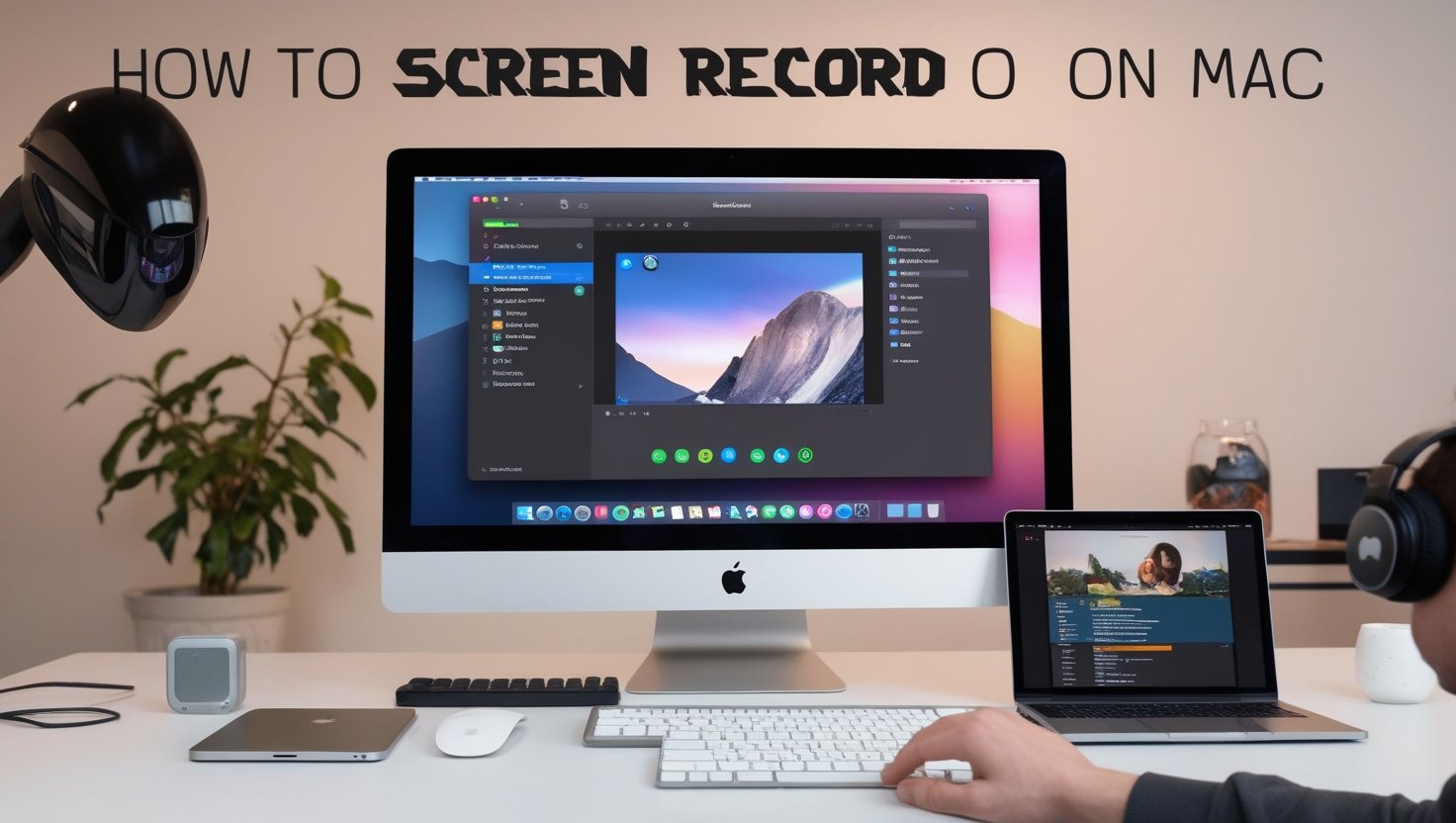Introduction
Learning how to screen record on Mac is essential for capturing important moments or creating tutorials. Macs offer built-in tools like the Screenshot Toolbar and QuickTime Player to simplify the process. Whether you’re recording a presentation or gameplay, you can achieve professional results effortlessly. The tools allow you to record full screens or select specific areas. With a few clicks, you’ll have a high-quality recording ready to share.
Why Use Built-In Tools for Screen Recording?
Understanding how to screen record on Mac using built-in tools simplifies the process. The Screenshot Toolbar, available in newer macOS versions, is perfect for quick recordings. QuickTime Player, another default app, provides advanced audio and video settings options. These tools save you the hassle of downloading third-party software and ensure your recordings are free of compatibility issues, making them a reliable choice.
The Role of the Screenshot Toolbar
The Screenshot Toolbar is a key feature for mastering how to screen record on Mac. Accessed with a simple Command (⌘) + Shift + 5, it offers intuitive controls for screen recording. You have the option of recording the whole screen or only a portion of it. The toolbar also includes a countdown timer for smooth preparation. Once you’re done, your recording is saved automatically to the desired location.
Using QuickTime Player for Recordings
QuickTime Player is a versatile tool for learning how to screen record on Mac. You can access powerful features by navigating to File > New Screen Recording. It allows you to record with audio from your microphone, making it ideal for voiceovers. QuickTime also provides smooth playback and editing options. With its user-friendly interface, creating high-quality recordings is a breeze.
Including Audio in Screen Recordings
If you want to include audio while mastering how to screen record on Mac, it’s easy to do. Both the Screenshot Toolbar and QuickTime Player offer options to select audio inputs. Simply enable your microphone to capture voiceovers or external sound. This is especially useful for creating tutorials, presentations, or commentary. Clear audio enhances your recordings and ensures a better viewing experience.
Setting Up for Professional Results
Preparing your system is crucial when learning how to screen record on Mac. Close unnecessary apps to avoid distractions during recording. Adjust the resolution for crisp visuals, especially if sharing the recording. Check your microphone settings for audio clarity. Taking these steps ensures your recording looks and sounds professional. A little preparation goes a long way in delivering polished results.
Editing Your Screen Recordings
After mastering how to screen record on Mac, editing becomes essential. macOS offers simple tools like iMovie for trimming and refining recordings. You can cut out unwanted parts or add captions for clarity. This is especially useful when creating educational or promotional content. Enhancing your recordings ensures they are engaging and effective for your audience.
Troubleshooting Common Issues
While learning how to screen record on Mac, you may encounter challenges. Common issues include low audio quality or laggy visuals. To resolve this, check your system’s performance and free up memory. Updating macOS ensures compatibility with the latest tools. By troubleshooting effectively, you can enjoy smooth and hassle-free screen recording.
Exploring Third-Party Alternatives
Although macOS provides built-in tools, exploring third-party apps can elevate how to screen records on Mac. Applications like OBS Studio or Camtasia offer advanced features like live streaming and detailed editing. These tools are ideal for professional users with specific needs. While built-in options suffice for most tasks, third-party software expands your capabilities.
Saving and Sharing Recordings
The final step in mastering how to screen record on Mac is saving and sharing your work. By default, recordings are saved to your desktop or preferred folder. You can share them from here via email, cloud storage, or social media. Ensure you choose the correct file format for compatibility. Sharing your recordings effectively ensures they reach the intended audience seamlessly.
Recording a Specific Area of the Screen
One of the best features when learning how to screen record on Mac is the ability to record a specific section of your screen. When using the Screenshot Toolbar, you can select Record Selected Portion, which allows you to define a particular area of the screen to capture. This is especially useful when highlighting a specific part of your screen, such as a presentation or software tutorial. This option gives you greater flexibility and keeps your recordings on only the relevant content.
Conclusion
Mastering how to screen record on Mac is a valuable skill that unlocks countless possibilities, from creating tutorials to capturing memorable moments. With tools like the Screenshot Toolbar and QuickTime Player, macOS provides simple yet powerful options for high-quality recordings. By following the proper steps, preparing your setup, and including audio, you can create professional results effortlessly. Whether for personal or professional use, screen recording on a Mac is both intuitive and effective. Start exploring these features today and enhance how you share your digital experiences.
